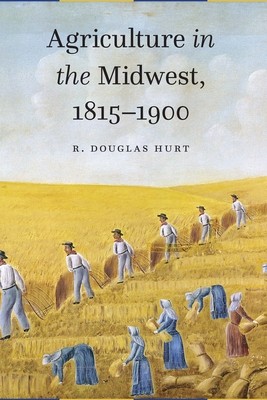
- We will send in 10–14 business days.
- Author: R Douglas Hurt
- Publisher: University of Nebraska Press
- ISBN-10: 1496233492
- ISBN-13: 9781496233493
- Format: 15.2 x 22.9 x 2.9 cm, kieti viršeliai
- Language: English
- SAVE -10% with code: EXTRA
Reviews
Description
After the War of 1812 and the removal of the region's Indigenous peoples, the American Midwest became a paradoxical land for settlers. Even as many settlers found that the region provided the bountiful life of their dreams, others found disappointment, even failure--and still others suffered social and racial prejudice.
In this broad and authoritative survey of midwestern agriculture from the War of 1812 to the turn of the twentieth century, R. Douglas Hurt contends that this region proved to be the country's garden spot and the nation's heart of agricultural production. During these eighty-five years the region transformed from a sparsely settled area to the home of large industrial and commercial cities, including Chicago, Milwaukee, Cleveland, and Detroit. Still, it remained primarily an agricultural region that promised a better life for many of the people who acquired land, raised crops and livestock, provided for their families, adopted new technologies, and sought political reform to benefit their economic interests. Focusing on the history of midwestern agriculture during wartime, utopian isolation, and colonization as well as political unrest, Hurt contextualizes myriad facets of the region's past to show how agricultural life developed for midwestern farmers--and to reflect on what that meant for the region and nation.EXTRA 10 % discount with code: EXTRA
The promotion ends in 22d.05:24:44
The discount code is valid when purchasing from 10 €. Discounts do not stack.
- Author: R Douglas Hurt
- Publisher: University of Nebraska Press
- ISBN-10: 1496233492
- ISBN-13: 9781496233493
- Format: 15.2 x 22.9 x 2.9 cm, kieti viršeliai
- Language: English English
After the War of 1812 and the removal of the region's Indigenous peoples, the American Midwest became a paradoxical land for settlers. Even as many settlers found that the region provided the bountiful life of their dreams, others found disappointment, even failure--and still others suffered social and racial prejudice.
In this broad and authoritative survey of midwestern agriculture from the War of 1812 to the turn of the twentieth century, R. Douglas Hurt contends that this region proved to be the country's garden spot and the nation's heart of agricultural production. During these eighty-five years the region transformed from a sparsely settled area to the home of large industrial and commercial cities, including Chicago, Milwaukee, Cleveland, and Detroit. Still, it remained primarily an agricultural region that promised a better life for many of the people who acquired land, raised crops and livestock, provided for their families, adopted new technologies, and sought political reform to benefit their economic interests. Focusing on the history of midwestern agriculture during wartime, utopian isolation, and colonization as well as political unrest, Hurt contextualizes myriad facets of the region's past to show how agricultural life developed for midwestern farmers--and to reflect on what that meant for the region and nation.

Reviews